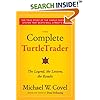It would be an interesting (but maybe time consuming:) exercise to go back and read the old annual reports and see if you also detect something fishy.
Buffett said he was troubled in part by a Freddie Mac investment that had nothing to do with its business.
"I follow the old dictum: There's never just one cockroach in the kitchen," Buffett said.
...
Buffett said he bought stock in Freddie Mac in the 1980s because "it looked ridiculously cheap." He said his company became one of Freddie Mac's largest shareholders before it began liquidating its stake in the late 1990s at an eventual profit of about $2.75 billion.
Buffett said he met with Brendsel and former Freddie Mac president David W. Glenn five or six times over the years at Brendsel's request, initially at a summer house Buffett had in Laguna Beach, Calif. Brendsel requested and followed some of his recommendations on whom Freddie Mac should appoint to its board, Buffett said.
Buffet said he became troubled when Freddie Mac made an investment unrelated to its mission. He wasn't clear on the specifics but said he "didn't think that made any sense at all" and "was concerned about what they might be doing . . . that I didn't know about."
...
Buffett said he reviewed Freddie Mac's annual reports every year he held stock in the company.
...
Buffett said he thought he expressed his concern to Brendsel in several conversations but added that he didn't keep notes or a diary and couldn't recall details.
...
Asked by the judge, William B. Moran, whether he felt his concerns were vindicated, Buffett said, "I think they were fully vindicated."




